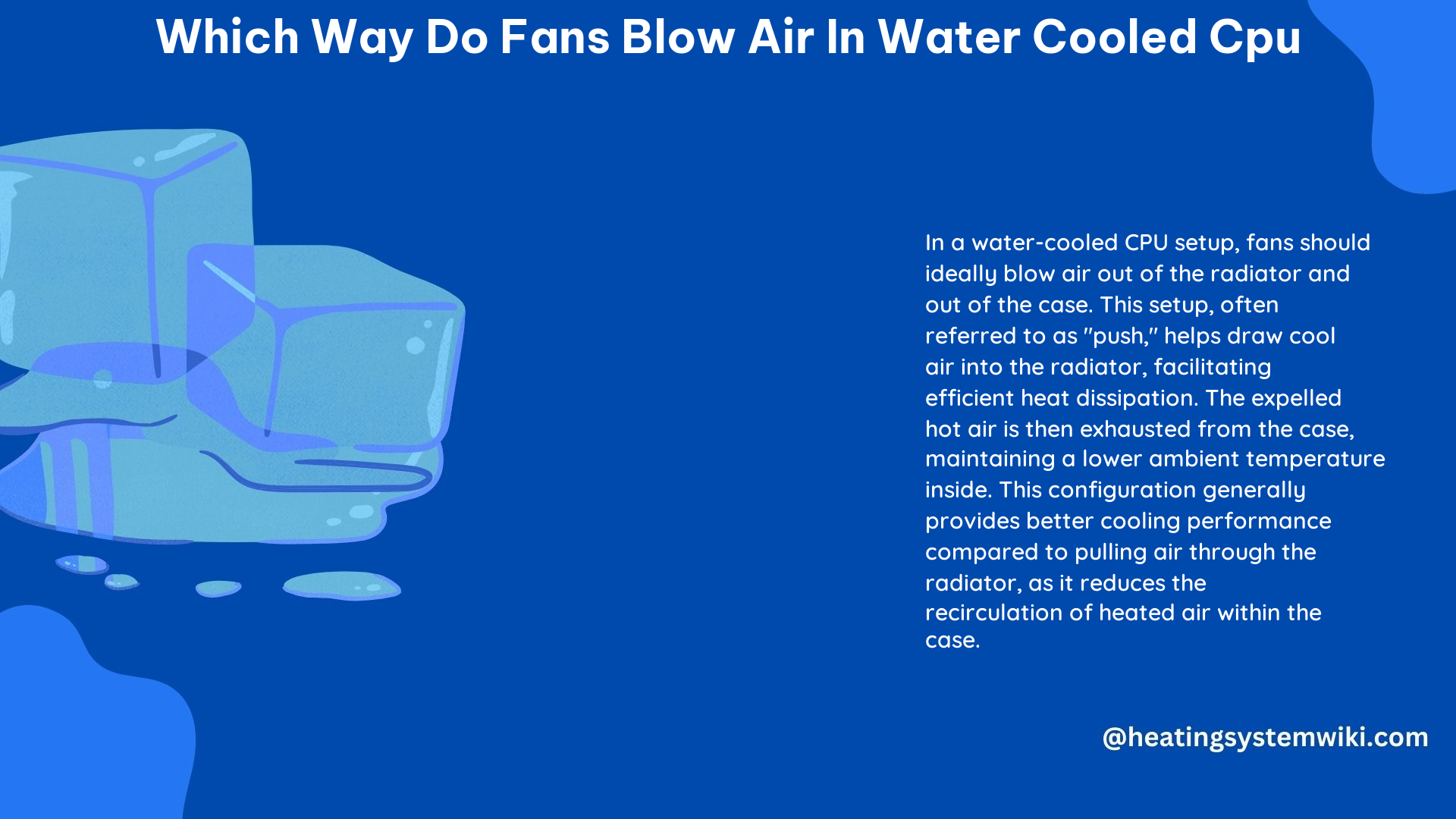In a water-cooled CPU system, the direction of airflow through the radiator can have a significant impact on the overall cooling performance. Understanding the technical specifications and the factors that influence the airflow direction is crucial for optimizing the cooling efficiency of your system. This comprehensive guide will provide you with a detailed analysis of the airflow direction in water-cooled CPU systems, along with a step-by-step DIY guide to help you determine the best configuration for your setup.
Technical Specifications
The technical specifications of the water-cooled CPU system components, such as the radiator and fans, play a crucial role in determining the optimal airflow direction. Let’s take a closer look at the key specifications:
Radiator Size:
– Length: 280mm
– Width: 120mm
– Thickness: 30mm
Fan Size:
– Diameter: 140mm
– Thickness: 25mm
Fan Speed:
– Range: 500-1500 RPM
Airflow:
– Range: 56.3-128.5 CFM (Cubic Feet per Minute)
Static Pressure:
– Range: 1.24-3.03 mmH2O (Millimeters of Water)
Noise Level:
– Range: 17.4-30.2 dBA (A-weighted Decibels)
These technical specifications provide a clear understanding of the cooling capabilities and performance characteristics of the water-cooled CPU system components, which will help you make an informed decision on the optimal airflow direction.
Which Way Do Fans Blow Air?

In a water-cooled CPU system, the fans on the radiator can blow air in two distinct directions: into the case or out of the case. The choice of airflow direction depends on the specific system configuration and the desired cooling performance.
Fans Blowing Air into the Case
When the fans are configured to blow air into the case, they draw cool air from outside the case and push it through the radiator. As the air passes through the radiator, it absorbs heat from the water-cooled CPU, becoming warmer. This heated air is then expelled into the case, increasing the overall temperature inside the case.
Advantages:
– The cooler air from outside the case is used to dissipate heat from the CPU, potentially resulting in better cooling performance.
Disadvantages:
– The heated air expelled into the case can increase the overall temperature inside the case, which may impact the cooling of other components.
Fans Blowing Air out of the Case
In this configuration, the fans draw the heated air from the radiator and expel it outside the case, reducing the overall temperature inside the case.
Advantages:
– The heated air from the radiator is expelled outside the case, helping to maintain a lower temperature inside the case.
Disadvantages:
– The warmer air from the radiator is used to dissipate heat from the CPU, which may result in less effective cooling performance compared to the “fans blowing air into the case” configuration.
DIY Guide: Determining the Best Airflow Direction
To determine the best direction of airflow for your water-cooled CPU system, follow these steps:
- Check your case configuration:
-
Identify the airflow direction of your case fans. Typically, front fans draw air into the case, while rear and top fans exhaust air out of the case.
-
Determine the location of your radiator:
- If your radiator is located at the top of the case, it is recommended to have the fans blowing air out of the case. This will help exhaust the heated air from the radiator and reduce the overall temperature inside the case.
-
If your radiator is located at the front or bottom of the case, it is recommended to have the fans blowing air into the case. This will help draw cooler air from outside the case and dissipate heat from the CPU.
-
Consider the airflow direction of your case fans:
- If your case fans are set to draw air into the case, it is recommended to have the radiator fans blowing air out of the case. This will help exhaust the heated air from the radiator and reduce the overall temperature inside the case.
-
If your case fans are set to exhaust air out of the case, it is recommended to have the radiator fans blowing air into the case. This will help draw cooler air from outside the case and dissipate heat from the CPU.
-
Test and adjust:
- After determining the best direction of airflow for your system, test the cooling performance and adjust as necessary.
- If you notice high temperatures or poor performance, consider reversing the direction of the radiator fans or adjusting the speed of the case fans.
By following these steps, you can optimize the airflow direction in your water-cooled CPU system to achieve the best cooling performance and maintain a comfortable temperature inside your case.
